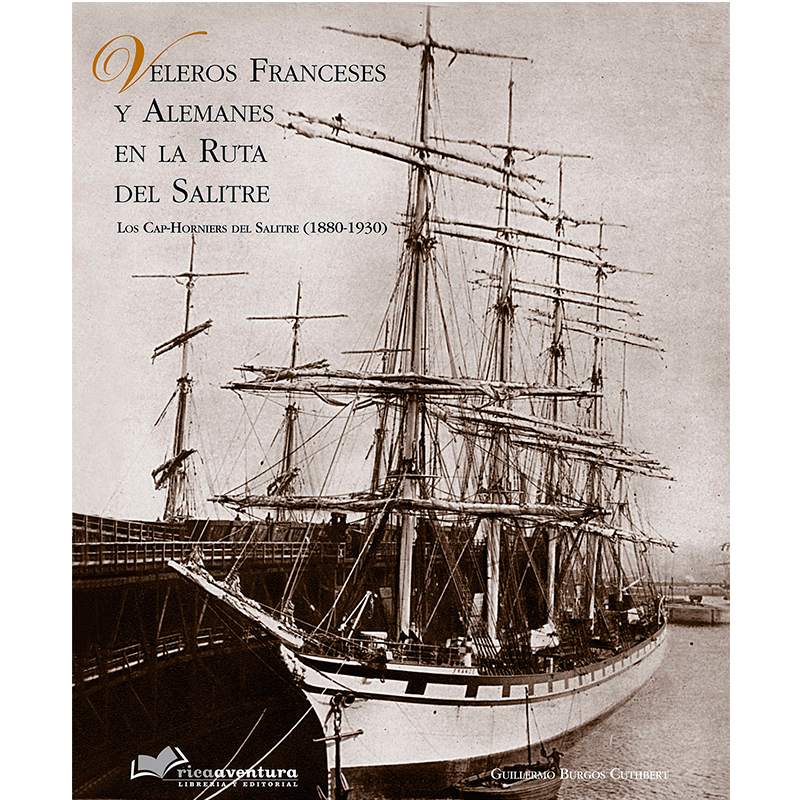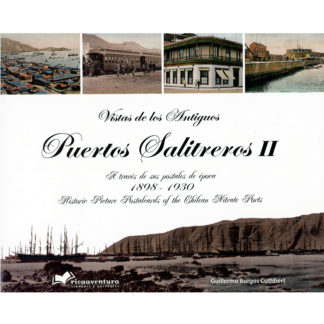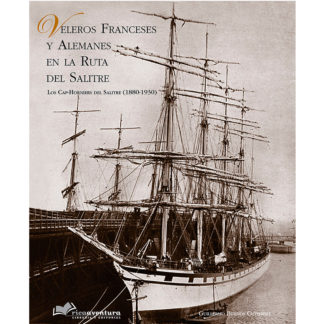Description
Veleros Franceses y Alemanes en la Ruta del Salitre. Los Cap-Horniers del Salitre (1880-1930)
Autor: Guillermo Burgos Cuthbert
Nuestro nuevo libro, Veleros Franceses y Alemanes en la Ruta del Salitre, da cuenta de la historia de la compañía armadora del bordelés Antoine Dominique Bordes y del hamburgués Ferdinand Laeisz, dedicadas fundamentalmente al porteo del salitre desde los puertos del norte de Chile hacia Europa. La visión de futuro de uno y otro les permitió fundar compañías navieras, que serían en su época consideradas pioneras por los volúmenes de carga transportada, cantidad de barcos y entrenamiento de sus tripulaciones. Ambas compañías utilizaron mayoritariamente veleros con los que rodeaban el Cabo de Hornos, enfrentando los inmensos peligros que tenía la navegación a vela por esos derroteros. Esta actividad naviera tuvo su apogeo entre 1880 y 1930 coincidiendo con el ciclo de expansión de la industria del salitre chileno.
Con el paso de los años, las travesías de los veleros de estas compañías rodeando el Cabo de Hornos se han constituido en un imperecedero recuerdo que nos permite asombrarnos con lo aguerrido de sus tripulaciones y la excelente construcción sus navíos, lo que les permitió ya en el siglo XX cruzar el Cabo con todo clima.
El periodista Salvador Reyes en 1960 en la revista Zig-Zag comenta: Nosotros los nortinos, no olvidaremos nunca el espectáculo que nos ofrecieron los airosos “clippers”, acercándose a nuestros puertos con todas sus velas desplegadas. Recuerdo que una tarde, al entrar a Taltal en un viejo caletero, lo hicimos al mismo tiempo que dos buques franceses y un alemán. Eran magníficos cuatro palos, de enormes y blancos velámenes, de finas proas. Parecían seres vivos, palpitantes y graciosos; maravillaban por su perfección y hacían sentir la gozosa audacia del cerebro humano, capaz de acercarse tanto a las creaciones de la naturaleza.







